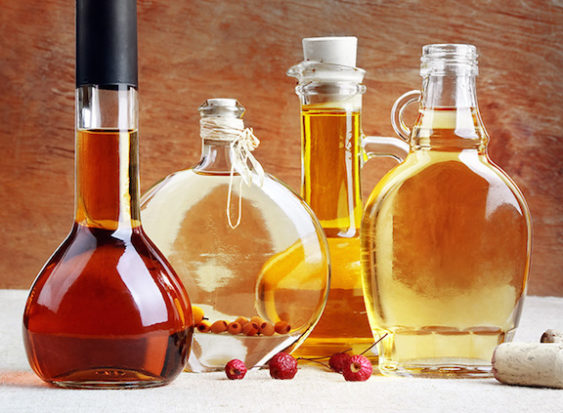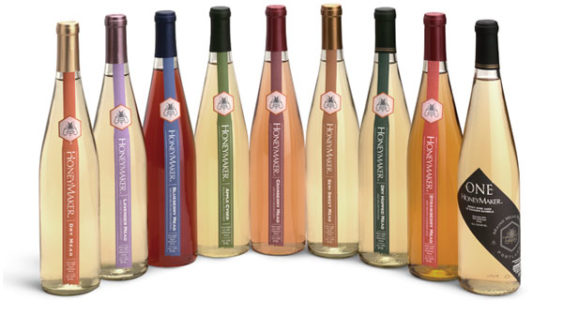The origins of alcoholic beverages are, unsurprisingly, a bit murky. But most folks think that mead was the first alcoholic beverage discovered by man. Mead is a drink made by fermenting honey and water. It’s basically honey wine, where the sugar for fermentation comes from honey instead of grapes. That’s right, just as not all grapes are made into wine, not all wine is made from grapes.

We owe the discovery of alcohol to the humble honeybee.
What probably happened was, thousands of years ago, some hunter-gatherers came across a beehive or two that had been soaking in rainwater and where indigenous yeasts had begun fermenting the sugar into alcohol. When the humans ate or drank the contents of the hive, thinking it was just honey, they instead discovered an intoxicating brew, and likely set about trying to duplicate the process on purpose.
Long before Pasteur discovered yeast under his microscope in the 19th century and humans began to understand the process of fermentation, mead became a hit in the ancient world. Eventually it was made as far afield as Europe, Asia, Africa and even the Americas. The Greeks called it nectar or ambrosia, the drink of the gods.
Mead was often flavored with other fruits and spices to enhance its taste, and it became the beverage of choice throughout the known world before as honey was supplanted by cheaper forms of sweeteners like cane sugar, and it became cheaper to produce other alcoholic drinks like ale, beer and grape wines.

Mead comes in a variety of styles. Image source: American Homebrewers Association.
However, mead is making a comeback. And no, not just at Renaissance fairs. There’s a big home brewing movement, as well as a resurgence of professional mead-making right here in the U.S. Here are a few different kinds of meads to look out for and some to try for yourself.
Traditional mead is made from the basics: honey, yeast and water. It can be anywhere from dry to semi-sweet. While embodying the flavor profile of the honeys from which they’re made, they don’t tend to be syrupy or saccharine. Those that are on the sweeter side and have an alcohol content that is above 14-15% can be classified as sack. Try those from Maine Mead Works.
Metheglin is a mead to which spices like cinnamon or cloves, or herbs such as lavender or hops have been added. The word is Welsh in origin and is thought to be the root of the English word, “medicine,” since draughts of it were often taken for health reasons. For some interesting flavor combinations, take a look at B. Nektar’s range of spiced meads.

Try Maine Mead Works’ lineup for a sampling of the variety of styles in which mead is made. Image source: Maine Mead Works.
Meads containing fruit (originally for preservation purposes) are called melomels. Some of the most sought-after in the U.S. are those with berries made by Michigan meadery, Schramm’s.
Cyser is a mead made with apples, sort of like cider. Sound good? Try Moonlight Meadery’s award-winning “Kurt’s Apple Pie.”
Braggot is a mead that is made with honey, malted grains and sometimes hops. Try Kuhnhenn’s, which is a blend of wildflower-honey mead and dark malts.
Not to be confused, a hydromel is a mead that contains a lower amount of alcohol by volume, usually less than 10%. A pyment is a mead that is made by fermenting honey with grape juice, and those that have spices added are called hippocras.
Final fun fact on mead? Though there are multiple explanations for the origins of the term “honeymoon,” one is derived from the fact that in certain Northern European cultures, newlyweds would drink mead (the “honey”) for a month (or “moon) after marriage. The amount of mead necessary was usually provided as a dowry by the bride’s family. By doing so, it was thought that the union would produce plenty of offspring. Cheers to that!

